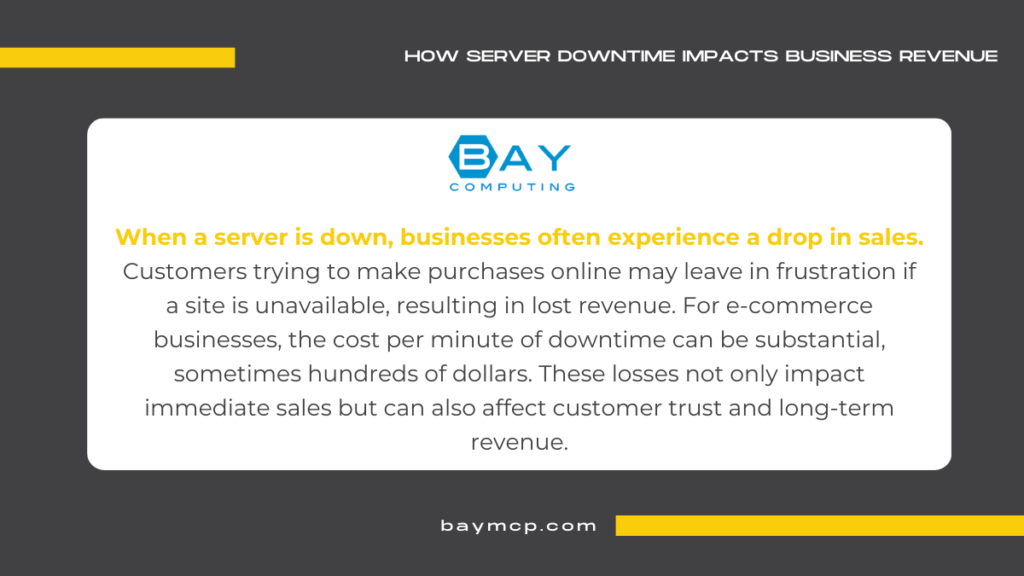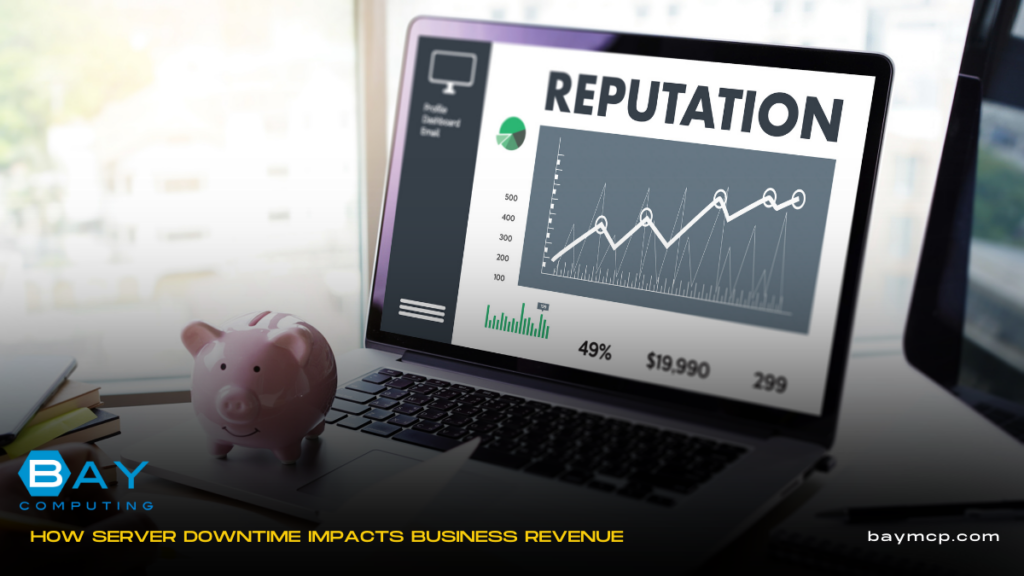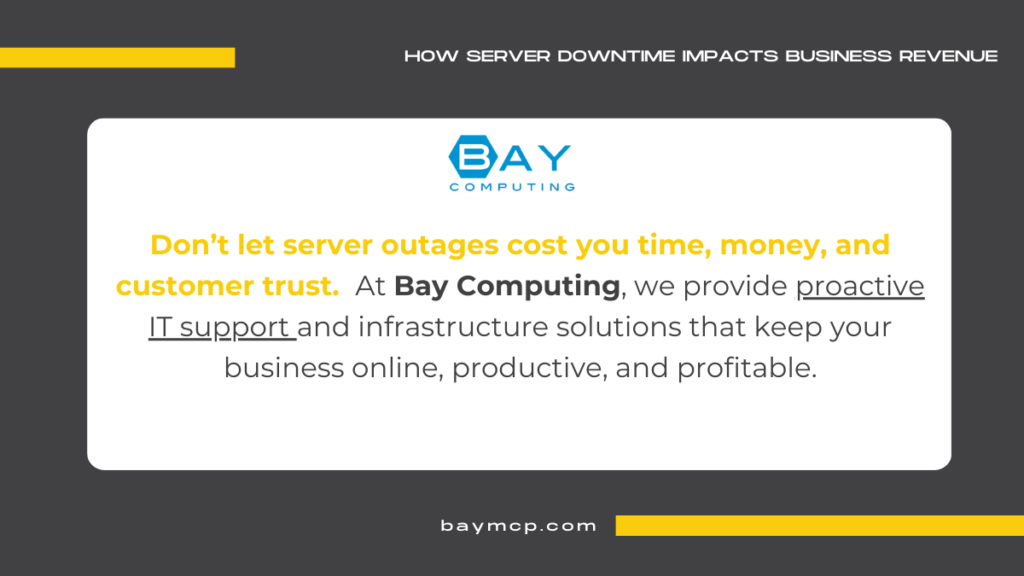How Server Downtime Impacts Business Revenue
Businesses rely heavily on their systems to remain uninterrupted. Server downtime can severely impact various aspects, leading to immediate and long-term financial effects. Lost revenue and reduced productivity are among the most significant consequences of server downtime. When servers go down, employees might be unable to perform their tasks, directly affecting productivity and leading to potential revenue loss.
Customer satisfaction is another critical area affected by downtime. Clients expect reliable IT services, and any interruption can damage a company’s reputation. When customers cannot access services or products, they may turn to competitors, causing a further decline in revenue. Consistency is key in maintaining customer trust and loyalty.
Besides revenue and customer satisfaction, data integrity and security can also be at risk during downtime. Lost data and potential security breaches may occur, requiring businesses to spend additional resources on recovery and defense measures. Implementing a strong disaster recovery planning strategy helps mitigate these risks by ensuring quick data restoration and system recovery. Understanding these impacts allows companies to plan better, minimize disruption, and maintain efficient operations.
Direct Costs of Server Downtime
Server downtime can lead to significant direct costs for businesses. These include lost sales, the expense of restoring services and recovering data, and penalties for breaching service level agreements (SLAs). Each of these areas can have immediate effects on a company’s bottom line.
Loss of Sales and Transactional Revenue

When a server is down, businesses often experience a drop in sales. Customers trying to make purchases online may leave in frustration if a site is unavailable, resulting in lost revenue. For e-commerce businesses, the cost per minute of downtime can be substantial, sometimes hundreds of dollars. These losses not only impact immediate sales but can also affect customer trust and long-term revenue.
Cost of Service Restoration and Data Recovery
Restoring services after a server failure involves various expenses. Companies may need to hire IT specialists or pay overtime to internal staff to fix issues quickly. There might also be costs for tools or services required to recover lost or corrupted data. These efforts can drive operational costs up significantly. For some businesses, this process can be lengthy and complex, leading to further financial strain.
Penalties for Breach of SLAs
Service Level Agreements (SLAs) often specify the maximum allowable downtime. Exceeding this downtime can result in penalties or fines. Companies might have to offer refunds or credits to their clients if these agreements are breached. This not only incurs direct financial loss but can also damage relationships with key clients. The impact of these penalties can be severe, particularly for businesses with strict service availability commitments.
Indirect Impacts on Business Revenue
Server downtime can affect a business in ways that aren’t immediately obvious. Trust and loyalty from customers, the company’s reputation, and staff productivity all play significant roles in shaping a company’s long-term financial health. Addressing these issues can help mitigate indirect losses associated with downtime.
Impact on Customer Trust and Loyalty
When servers fail, customers may feel frustrated and lose trust in the business. Unavailability can lead to dissatisfaction, as users might experience incomplete transactions or delays that negatively impact their experience. This erosion of trust can make customers hesitant to return for future business, potentially shifting their loyalty to competitors.
Repeated downtime can multiply these effects. Even a brief outage can cause lingering doubts among customers. Efforts to repair customer relationships often require significant time and resources without the guarantee of restoring initial trust levels. Companies must maintain uptime to prevent negative perceptions that drive customers away permanently.
Long-Term Brand Damage and Reputation

Downtime can have lasting effects on a business’s reputation. A single event of prolonged downtime can capture the public’s attention, especially in today’s digital age where word spreads quickly online. Poor reviews and negative discussions about reliability can overshadow marketing efforts, causing long-term brand damage.
Repeated server failures multiply these issues by reinforcing the idea that the company is unreliable. Rebuilding a tarnished image requires dedicated efforts through marketing campaigns and consistent performance improvements. Businesses must invest in these areas to slowly restore their reputation and regain the lost trust of their client base.
Employee Productivity Loss
Employee productivity suffers significantly during downtime. When systems are unavailable, employees may find themselves unable to complete tasks, leading to frustration and wasted time. This can result in delays in meeting deadlines or fulfilling customer needs, further affecting revenue indirectly.
Moreover, downtime forces staff to focus on resolving these issues rather than their usual productive tasks. Resources are diverted away from core business functions to troubleshoot and rectify the outages. This shift impacts overall productivity levels and can cause financial strain as the company attempts to recover from disruption.
Minimize Downtime. Maximize Revenue.

Don’t let server outages cost you time, money, and customer trust. At Bay Computing, we provide proactive IT support and infrastructure solutions that keep your business online, productive, and profitable.
Whether you’re facing frequent downtime or want to prevent it before it starts, our expert team is ready to help with tailored strategies that ensure system reliability and peak performance.
Contact Bay Computing today to secure your operations and safeguard your bottom line or call (510) 526-3444 for a free consultation. Let’s build uptime into your success.




